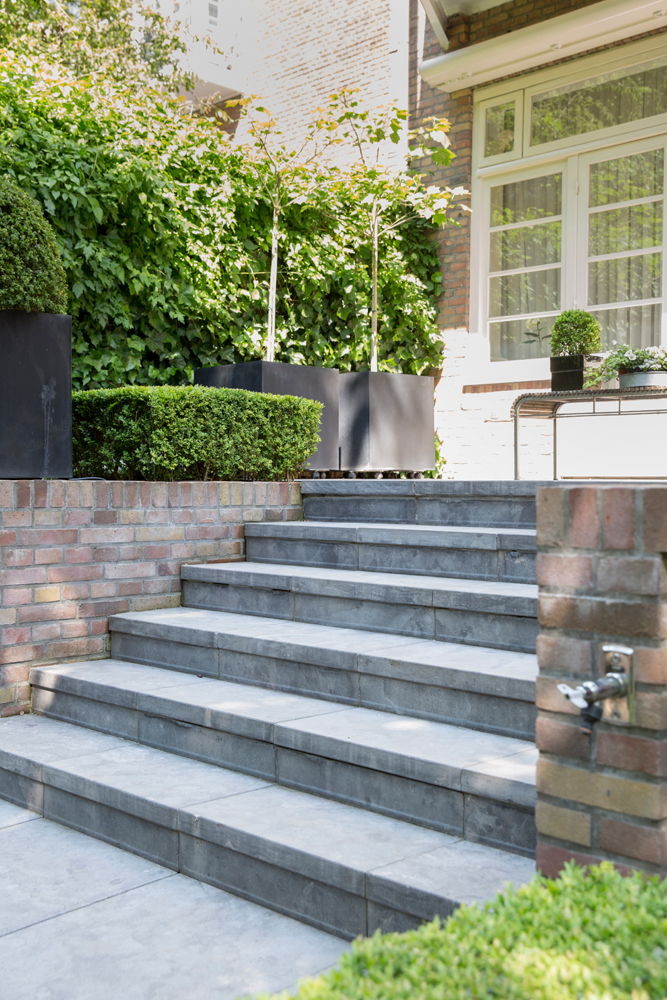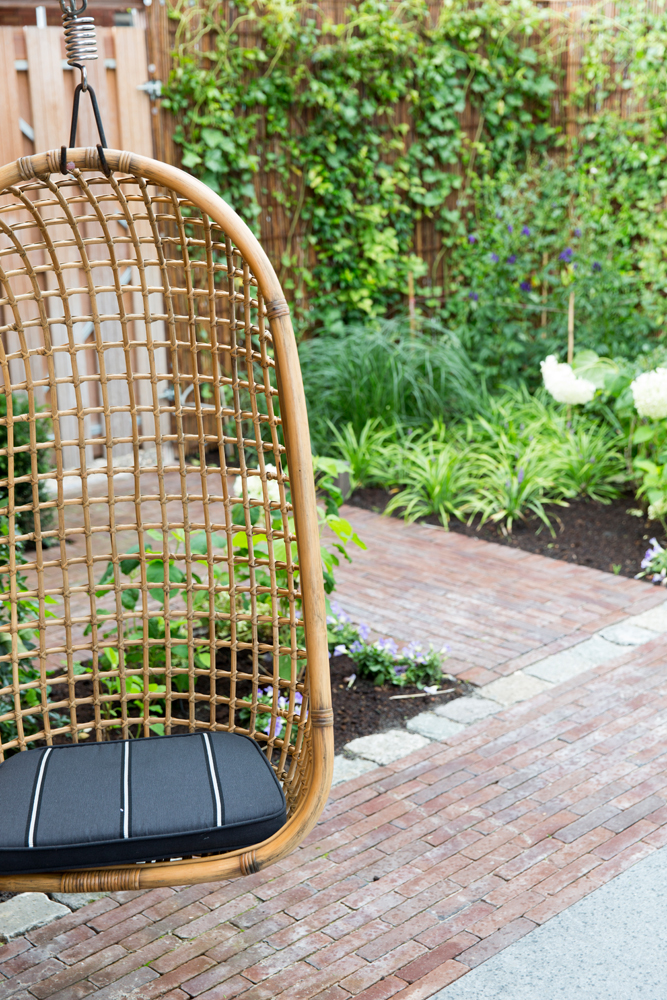Paving Materials
Paving is one of the most important components of a garden. As a result of the large number of materials available, making a choice can be difficult. The following information can help you to decide:
The colour and appearance of the external wall of your house. For instance, if you live in a house built in the thirties, modern materials might not create a harmonised image. In that case
baked or natural stone materials are probably preferential. For a more recently built house, you also have the choice of paving materials which have a more modern character, such as concrete or more modern baked paving materials.
Bricks, slabs or a combination of the two. Bricks can be divided into two types: the more affordable concrete bricks available in all sizes and colours and the hard baked bricks formed in the old, traditional moulds, or as a newly baked brick.

Because of the baking process the hard-baked brick is less susceptible to weather influences. This brick will always retain its colour. Because of this inherent quality, the hard-baked brick is more expensive to purchase. There are three sizes most commonly used: „De “Waalformaat“ brick (five inches thick), “Dikformaat“ brick (seven inches thick) and “Keiformaat“ brick (ten inches thick). In order to make the right choice, it is recommended to take some brick samples home.
There are also two types of slab: concrete slabs, which are available in all sizes and designs, and natural stone slabs. In order to make the right choice, it is recommended to take some samples home. It is worthwhile to note that the price per square meter is lower for slabs than bricks.
A maximum of three types of material. It is recommended not to use more than three different materials if you would like to maintain an atmosphere of tranquillity in your garden. There are of course other options for driveways and paths, such as gravel, pebbles and chippings.
The way in which the paving is laid greatly influences your garden’s character. You can create a spatial effect by paving in a certain direction. You could also decide to pave the edges of your patio and seating areas in a different colour. This will make the these areas stand out among the other paved areas. It is advised to select a slab size that fits the size of your patio, since a patio that consist mainly of whole slabs promotes a tranquil environment. It also saves on costs as you require less cutting and trimming of the slabs.
Thickness. When using slabs or bricks for paving driveways, they should be at least 5 cm or 8 cm thick, respectively. For seating areas they may be thinner.

Whichever type of paving material you choose, they will be locked in with concrete bands or bricks placed upright around the edges to ensure the pavement does not sag or start gapping. For inspiration, browse different paving materials at paving firm Kippersluis kunt u zich oriënteren op verschillende materialen.